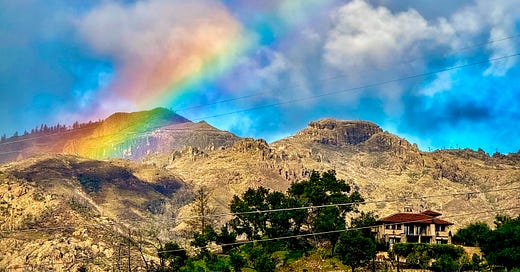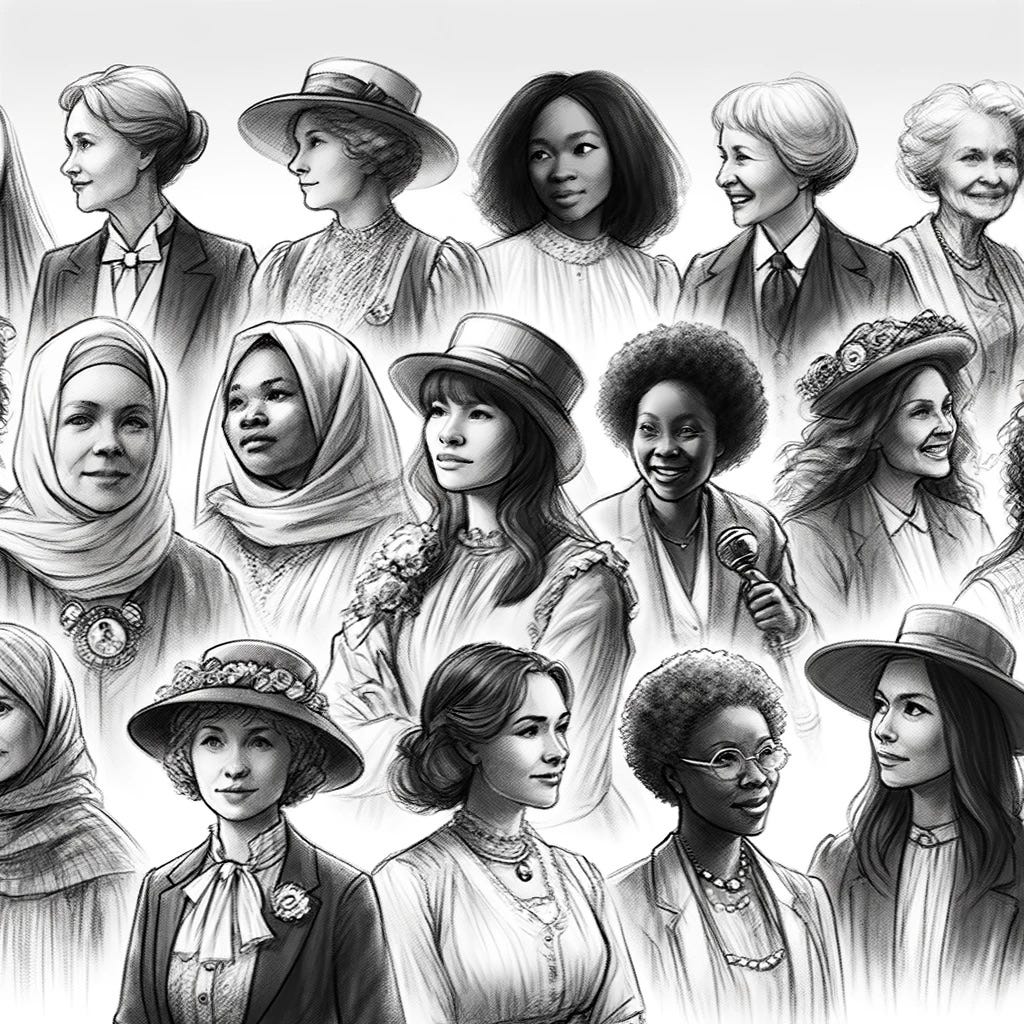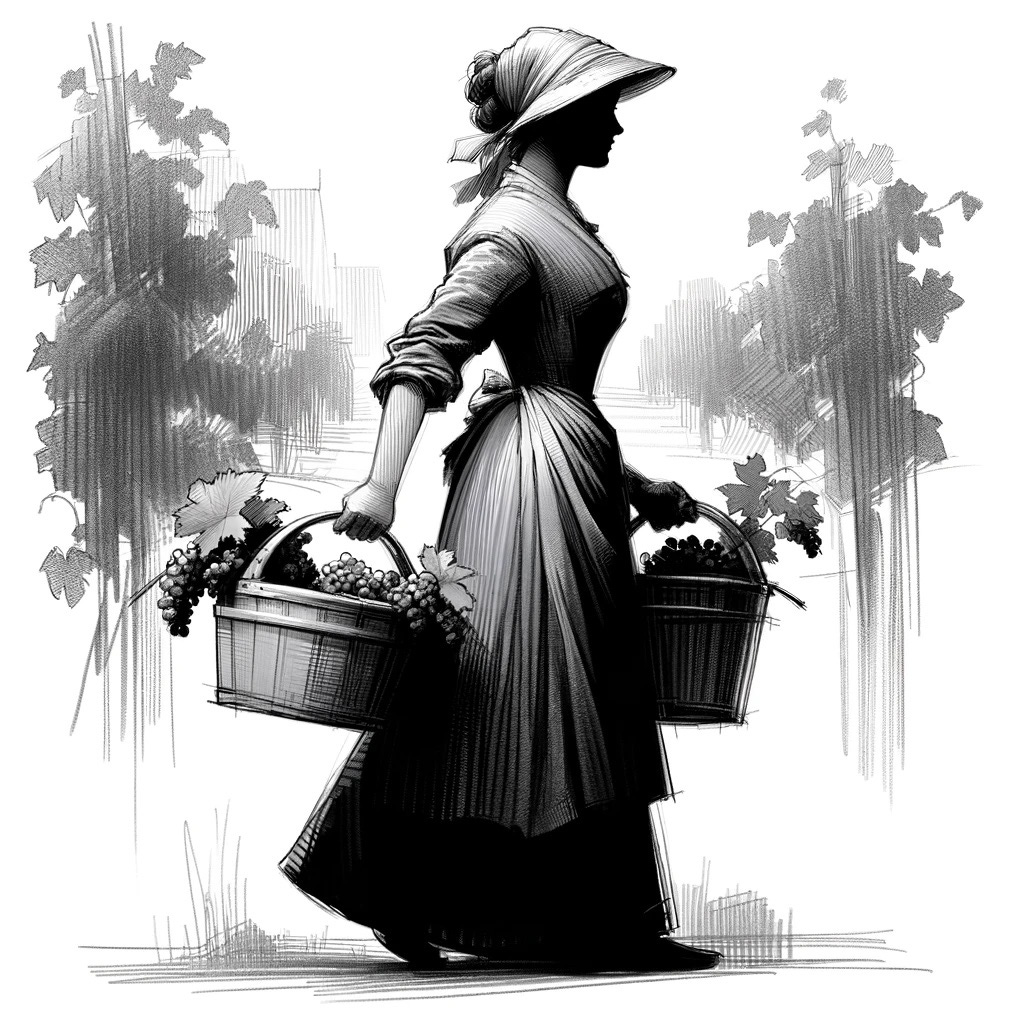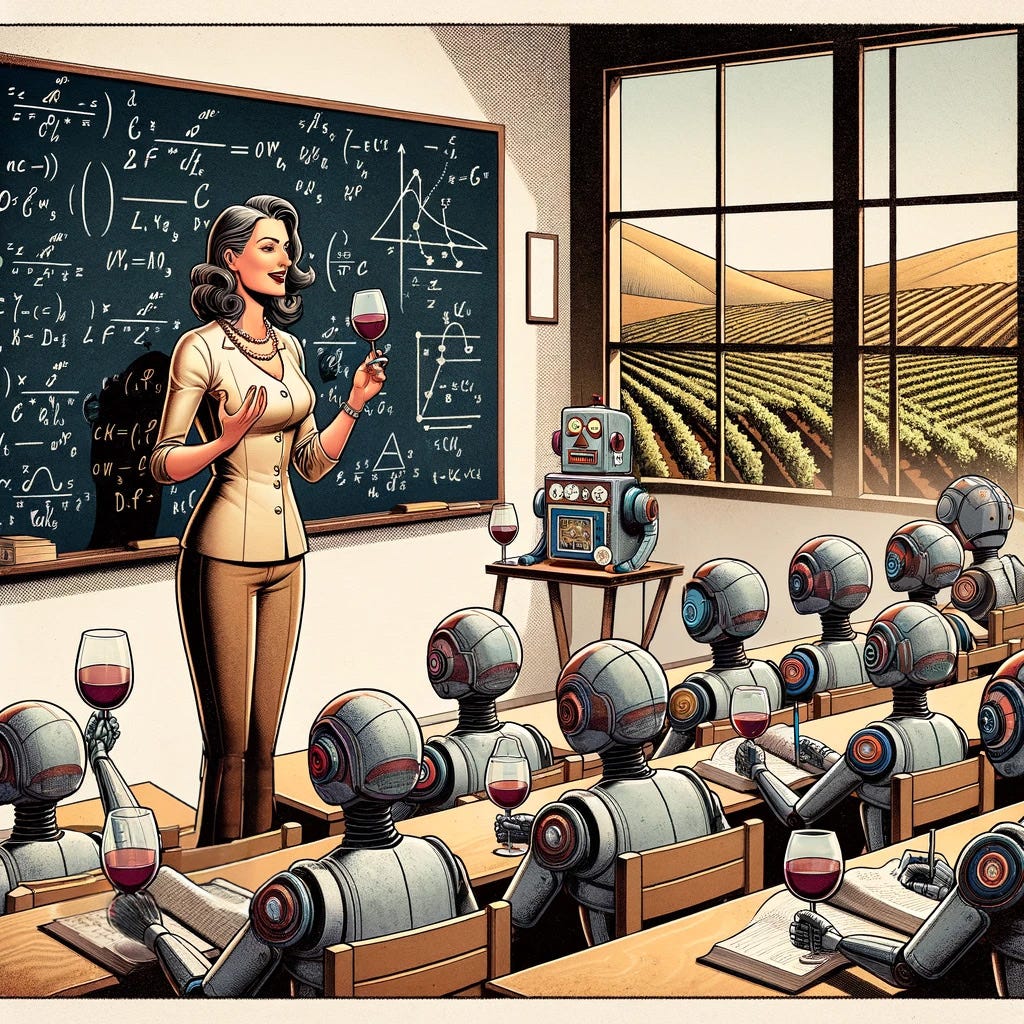NAPA VALLEY, Calif. — March is Women's History Month. It is an opportunity not only to recall the famous figures who have shaped our world but also the countless unsung heroines whose resilience, courage and contributions have been pivotal in both history and our daily lives. This month also shines a light on caregivers and community builders, celebrating the essential role women play in maintaining societal cohesion. From the pioneers of the past to the trailblazers of today and from the mothers and caregivers to the leaders and innovators, this celebration is a tribute to women everywhere. It acknowledges every woman who has played a role, no matter how underrecognized, in nurturing, guiding and forging a better future.
The origins of Women's History Month
Women's History Month traces its origins to the early 20th century with the establishment of International Women's Dayon March 8, 1911. It wasn't until 1981 that the U.S. Congress passed a resolution recognizing Women's History Week. This expanded to a monthlong celebration in 1987 after advocacy by the National Women's History Project. The month was dedicated to reflecting on the often-ignored contributions of women to U.S. history and contemporary society.
Historical progress and challenges
The path of women's rights in the United States has seen significant milestones and formidable challenges. The 19th Amendment, ratified in 1920, granted women the right to vote.
In subsequent decades, women's roles and rights continued to evolve. The 1960s and 1970s saw a surge in the feminist movement that led to significant legal and social changes. These included Title IX of the Education Amendments of 1972, prohibiting sex-based discrimination in federally funded education programs, and the Equal Credit Opportunity Act of 1974, allowing women to hold bank accounts and apply for loans without a male co-signer.
However, as recent court decisions have shown, progress is not linear. The fluctuating legal landscape regarding women's healthcare rights, particularly reproductive rights, highlights the continued relevance of Women's History Month. It's a stark reminder that the rights and freedoms we celebrate can be reversed and should therefore never be taken for granted.
Perseverance, courage and justice
Women's History Month is not just about acknowledging the past; it's about drawing inspiration for the future. It's a time to remember that perseverance, courage and a quest for justice and equality can prevail even in the face of adversity. The month celebrates women who, despite being repressed and marginalized, have fought tirelessly for their rights and the rights of others.
These stories of bravery and resilience are particularly important as they provide a blueprint for current and future generations. They remind us that change is possible but requires determination, solidarity and a courageous commitment to justice.
The path forward
This month serves as both a reminder and a call to action. It's a reminder to continue advocating for policies and practices that promote gender equality and to challenge the structures and norms that perpetuate gender disparities. It's about recognizing that while we celebrate achievements and progress, the journey toward full equality continues.
Beyond the well-known figures
Women's History Month is also a time to recognize the countless selfless women throughout history who have stepped up and in when needed, taken care of their families and communities, and provided support, nourishment and comfort to those in need. These women, often unsung heroines of their times, have been pivotal in holding together the social fabric through their unrelenting efforts and sacrifices. This month is not just about recognizing the famous but acknowledging the force that is womanhood in all its forms.
Community tributes to underappreciated women
When I asked my family and friends to name an underappreciated woman in their lives, the common reaction was, "Only one?" Below you'll find a compilation of some of their responses. To those whose stories aren't listed or who wish to contribute their own, feel free to add them in the comments section. Thank you to everyone who has contributed.
Valerie Munro (1922-1987): “I am inspired by my mother, who lived a quiet life of selfless dedication and service to her family, community and country without seeking compensation or recognition.” From Lynn Carl, Napa County.
Jane Austen (1775-1817) was an English novelist known for her insightful social commentary and irony in works such as "Pride and Prejudice" and "Sense and Sensibility." Sasha Paulsen, Napa County, wrote, “At first I was dismissive of ideas like Women's History Month. I thought 'What? For one month only we will tell stories of remarkable women? We should be doing this all year long. But what I have come to value about this month or Black History Month is that it sends people searching back through history for stories of people who, against far greater odds than we face today, became composers, authors, journalists, scientists, educators and political leaders, yet we never heard their stories until now.”
Hildegard of Bingen (1098-1179), a Benedictine abbess, was a renowned polymath of the High Middle Ages, known for her contributions as a writer, composer, philosopher, mystic, visionary and medical practitioner, often credited as the founder of scientific natural history in Germany. From Clinton Carl, Los Angeles County.
Babe Didrikson Zaharias (1911-1956) was an American athlete excelling in golf, basketball, and track and field, becoming one of the greatest female athletes of the 20th century. From Ml Hilton, Napa County.
Clara Barton (1821-1912), founder of the American Red Cross, was a pioneering nurse who organized relief efforts for soldiers during the American Civil War and later established a significant humanitarian organization. From Kelly Nelson Steinthal.
Dorothy Parker (1893-1967) was an American poet, writer, critic and satirist known for her wit and involvement with the Algonquin Round Table in New York City. From Misty Sagadin Cole, Napa County.
Elizabeth I of England (1533-1603), a prominent monarch who reigned from 1558 until her death, was known for her skillful handling of political and religious challenges and for fostering the English Renaissance. From Wendy Bittner.
Eleanor Roosevelt (1884-1962) was an American political figure, diplomat and activist, renowned for her role as the first lady from 1933 to 1945 and her significant contributions to human rights and social causes. From Allene Hansen Picardi, Napa County, who described her as compassionate and ahead of her time.
Helen Caldicott (born 1938) was an Australian physician, author and anti-nuclear advocate. Caldicott remains a leading figure in the international campaign against nuclear weapons and the environmental and health dangers associated with nuclear power. From Maxine Cottrell, who grew up in Napa County but now lives in Sacramento County.
Jenny Elise Anderson Kylen (1872-1964): Dave Stoneberg’s great-grandmother was a Swedish immigrant who settled in northern Illinois in 1892. Known affectionately as Nana, she epitomized resilience and perseverance, raising three children alone after her husband's tragic death in a logging accident and resourcefully providing for her family during challenging times.
Lucinda Offield (Early 1800s-1891): Joni Stoneberg’s great-great-grandmother, was a pioneering woman of remarkable fortitude. She journeyed from Missouri to Oregon in 1850, overcoming the loss of her husband to cholera and the death of their oxen en route. With five children, she resourcefully continued, using cows to pull a found wagon and manually transporting their belongings over mountainous terrain, exemplifying extraordinary determination and resilience.
“My friend Mary Hillhouse, who started Bicycle Works with husband Bob Hillhouse, was such an inspiration to other women bicyclists and just a champion of women in general.” From Catherine Scott Linden.
Michelle Obama (born 1964) is an American attorney, author and former first lady who is known for her advocacy on issues such as poverty, education and healthy living. From Victoria Boscarino, Napa County, who commended her as a motivating and active first lady and a powerhouse for education and equality.
Pink (born Alecia Beth Moore in 1979) is an American singer, songwriter and performer known for her distinctive voice and edgy pop-rock style. From Katherine Zimmer Burke, Napa County, who praised her as trailblazing, unapologetic, all-inclusive and the top female singer-songwriter-performer of this generation.
Elizabeth Blackwell (1821-1910) was the first woman to receive a medical degree in the United States, paving the way for women in the medical profession. From Amy Herold, Napa County, who highlighted her perseverance as the first female physician and an advocate for social reform.
Mary Shelley (1797-1851): Best known for writing "Frankenstein or, the Modern Prometheus," Shelley is credited with creating the first science fiction novel, blending Gothic and Romantic elements to explore themes of creation and responsibility. From Mackenzie (Carl) Hembree.
M.F.K. Fisher (1908-1992) was an American food writer known for her literary approach to cooking and gastronomy. From Kennedy Golden, who grew up in Napa County and now lives in Sacramento County, reflecting on her mother's enduring inspiration through writings on human connection and good food. Note: Ann Mini, who grew up in Napa County also suggested this entry.
Laurie M. Shelton wrote, “It’s so good to look back so that we can be reminded to look forward. Women still need to be recognized.”
Rachel Carson (1907-1964) was an American marine biologist, author and conservationist. Her book, "Silent Spring" (1962), is credited with advancing the global environmental movement by exposing the dangers of pesticides, particularly DDT. From Kathleen Scavone, Napa County.
Rosa Bonheur (1822-1899): A renowned French painter and sculptor, Bonheur achieved fame in the 19th century for her realistic portrayal of animals, breaking gender barriers in the art world and becoming an inspiration for future generations of female artists.
Rosa Parks (1913-2005): Known as "the mother of the civil rights movement," Rosa Parks' refusal to give up her seat on a segregated bus in Montgomery, Alabama, in 1955 became a pivotal symbol in the fight against racial segregation and sparked the Montgomery Bus Boycott. From Paul Franson, Napa County.
Ruth Bader Ginsburg (1933-2020): An associate justice of the U.S. Supreme Court from 1993 until her death, Ginsburg was celebrated for her advocacy for gender equality and women's rights and for writing landmark court opinions, especially on civil liberties and equal protection under the law. From Gayle DeRusha Davies, Napa County.
Beyond my own grandmother, Juanita, here is my list of underappreciated women of history:
Ada Lovelace (1815-1852): Known for her work on Charles Babbage's early mechanical general-purpose computer, the Analytical Engine, she is often celebrated as the first computer programmer.
Barbe-Nicole Clicquot Ponsardin (1777-1866): Known as the "Grande Dame of Champagne," she took over her husband's wine business in the early 19th century. She established the champagne house Veuve Clicquot and pioneered several key champagne production techniques, including riddling.
Chien-Shiung Wu (1912-1997): A Chinese-American physicist who made significant contributions in the field of nuclear physics, particularly in the experimental testing of the law of conservation of parity.
Emmy Noether (1882-1935): A mathematician recognized for her groundbreaking work in abstract algebra and theoretical physics.
Frida Kahlo (1907-1954): A Mexican artist best known for her striking and emotional self-portraits and works inspired by nature and artifacts of Mexico.
Grace Hopper (1906-1992): A pioneer in computer science, instrumental in developing early computer technologies and programming languages.
Hedy Lamarr (1914-2000): An actress and inventor, she co-developed a radio guidance system using frequency-hopping technology, important to modern wireless communications.
Henrietta Lacks (1920-1951): Her cancer cells led to the creation of the HeLa cell line, one of the most important cell lines in medical research.
Hypatia (c. 360-415): A well-known mathematician and philosopher in Alexandria, remembered for her teachings and tragic death.
Ida B. Wells (1862-1931): A key figure in the American civil rights movement, Wells was an investigative journalist and one of the founders of the NAACP.
Katharine Burr Blodgett (1898-1979): The first woman to receive a Ph.D. in physics from Cambridge University, known for inventing non-reflective glass.
Lise Meitner (1878-1968): A physicist who played a major role in the discovery of nuclear fission, she was nominated 19 times for the Nobel Prize in Chemistry between 1924 and 1948 and 30 times for the Nobel Prize in Physics between 1937 and 1967. She never received the Nobel Prize, but her colleague, Otto Hahn, did.
Maria Sibylla Merian (1647-1717): A pioneering entomologist and scientific illustrator known for her studies of insect metamorphosis.
Mary Anning (1799-1847): An English fossil collector and paleontologist who made significant contributions to the early understanding of prehistoric life.
Nellie Bly (1864-1922): An American journalist known for her record-breaking trip around the world and investigative reports on social issues.
Noor Inayat Khan (1914-1944): A British spy in World War II, known for her service in the Special Operations Executive and her execution by the Nazis.
Octavia Butler (1947-2006): A groundbreaking African-American science fiction author known for exploring complex themes in her work.
Rosalind Franklin (1920-1958): Played a crucial role in understanding the molecular structure of DNA, though her contributions were not fully recognized during her lifetime.
Ruby Bridges (born 1954): A pivotal figure in the civil rights movement, Bridges was the first African American child to integrate an all-white school in New Orleans at age 6, symbolizing the fight for racial integration in education.
Shirley Ann Jackson (born 1946): A physicist who became the first African-American woman to earn a doctorate at MIT and later become the president of Rensselaer Polytechnic Institute.
Sophie Scholl (1921-1943): A member of the White Rose non-violent resistance group in Nazi Germany, executed for her resistance activities.
Wang Zhenyi (1768-1797): A Qing dynasty astronomer and mathematician who broke traditional gender roles in her field.
Early women winemakers
According to Gilbert and Gilbert, updated 2023, the first woman winemaker in California was Hannah Weinberger (1840-1931). Weinberger started making wine in the Napa Valley in the late 19th century. She ran the Weinberger Winery (now William Cole Vineyards), one of the earliest wineries in Napa, after her husband's murder. Josephine Tychson of Freemark Abbey, a contemporary of Weinberger in Napa, was a winery owner but not a winemaker. Tychson completed the family winery in 1886, following the death of her spouse, and operated the winery until 1894.
Mary Ann Graf, the first woman to receive an enology degree from UC Davis in 1965, worked first as a chemist and assistant winemaker with Gibson Wine Co. in Central Valley before being appointed winemaker at Simi Winery in Healdsburg in 1973. She was followed at UC Davis by Zelma Long in 1970, whose first position was at Robert Mondavi; Barbara Lindblom in 1972; Merry Edwards in 1973; Sandra Belcher in 1974; Milla Handley in 1975; Alison Doran-Green in 1976; Julianne Laks in 1977; and Cathy Corison, Carol Shelton and Jill Davis in 1978. Each of these modern-era pioneers is an esteemed winemaker and a leader in the field. NB: Mary Ann Graf and Milla Handley passed in 2019 and 2020, respectively. The Gilberts’ book, “Women Winemakers: Personal Odysseys (2020),” can be ordered here.
Last week
Dave Stoneberg covered Calistoga's upcoming ban on the sale and use of all polystyrene products for use in food service, including plastic utensils and foam containers. This ordinance, effective mid-March, aligns with similar environmental efforts in cities such as Berkeley and San Francisco. It requires restaurants to use reusable foodware for in-house dining and compostable materials for takeout. The initiative, driven by the city's Green Committee, aims to significantly reduce plastic pollution and environmental impact.
Virginie Boone explored the transformation of the Pym-Rae Tesseron Estate, previously owned by Robin Williams. Alfred Tesseron has converted this Napa Valley estate into a biodynamic wine producer, focusing on a unique wine blend from organically farmed grapes. The estate, renowned for its distinctive terroir and elevated location, honors Williams by incorporating two of his children's middle names into its name, while Tesseron brings his family's extensive winemaking heritage to the venture.
Sasha Paulsen wrote about Thomas Conlin, a Grammy-winning conductor in Napa Valley, and his upcoming concert, "The Glory & Grandeur of Beethoven" with the Vallejo Festival Orchestra. Conlin, who studied with Leonard Bernstein and has an extensive global conducting career, emphasizes the enduring relevance and joy of Beethoven's music in contemporary times. Set to showcase major works such as Beethoven's Symphony No. 3 “Eroica” at the Empress Theatre, Conlin aims to highlight the composer's universal appeal and the uplifting nature of his compositions amidst today's social and political challenges.
In his article, Dan Berger explored the complexities of wine flavors, distinguishing between primary varietal characteristics ("A" attributes) and the nuanced secondary elements ("B" attributes) influenced by winemaking techniques. He noted a declining interest in wines with complex profiles, particularly pointing out the fruit-driven nature of California wines. Berger expressed a preference for European and New Zealand wines, which, in his view, offer richer "B" characteristics. His discussion highlighted the significance of appreciating both the primary and secondary flavors in wine.
Tim Carl's "Under the Hood" article focused on the rapid increase in Type-02 “Winegrower” licenses in Napa Valley, noting a 300% rise since 2008, with projections of nearly 2,000 licenses by the end of 2024. This growth enables more brands to produce wine and leverage the Napa Valley name, significant in a market with slow consumption and high pricing pressures. Carl also discussed a new trend of blending Napa Valley grapes with those from other regions and the potential market implications of this surge in licenses, especially given Napa's high grape prices and prestigious branding.
Dave Stoneberg explored the impact of AI on journalism, sharing his experience with AI transcription tools that significantly reduced his workload. He pondered the potential of AI in journalism, raising questions about its distinction from human writing, the necessity of disclosure and its role in the future of journalism. Stoneberg emphasized the importance of human oversight in using AI, highlighting that the technology's impact is contingent on how it is utilized.
Pat Hitchcock discussed the benefits of gardening during the "shoulder season," the period between late winter and early spring. She suggested planting cool-weather vegetables such as arugula, lettuce and radishes, that can be harvested before summer crops. Hitchcock emphasized understanding the "days to maturity" for each plant and recommended using this underutilized time for growing Asian vegetables and root crops. Her advice aims to help gardeners extend their growing season and enjoy a continuous vegetable yield.
Next week
Next week, we have more interesting articles from a host of Napa Valley Features contributors. On Monday Paulsen will delve into the recent vintner’s award and its recipient's intriguing life story. Tuesday brings Stoneberg's comprehensive update on the Napa Communities Firewise Foundation (Napa Firewise), the 31 Fire Safe Councils and their collaborative fire preparedness efforts. The Master Gardener series will appear on Wednesday along with Scavone discussing the ecological refuge of Moore Creek. Continuing the focus on wine, Berger's Thursday column will present Part II of his merlot series. The Weekender on Friday promises a guide to the latest Napa Valley events and activities. Carl's Saturday "Under the Hood" segment will scrutinize label laws and offer an economic dashboard and a list of hot topics from our team. Additional information and insights will also be featured throughout the week, including a possible update on the Glory Hole by Peter Kilkus and more.
Due to length constraints, “Levity Corner” will return next week.
If today’s story captured your interest, explore these related articles:
Valley Players champion mature women and their untold stories
Three Napa Valley women champion arts and community projects
The Silverado Trail Strawberry Stand: Cultivating a Flavorful Legacy Through Family Harvests
St. Helena sisters Angelina and Riana Mondavi prepare for winegrape harvest
Remembering Janis Gay: a life of resilience, grace and dedication to education
Tim Carl is a photojournalist based in Napa Valley.
* "Rupert" is a comic series by Kathleen Scavone. Enjoy this clever and thoughtful work from a talented artist and writer.











Another alternative is to donate to organizations or causes that these women supported
I am happy that women have overcome the little housewife role. But in some societies even in our country it still exists. Is it the way mostly men are raised or is it a sexual thing for feelings of superiority. There are many men who would never vote for a woman no matter how capable she might be. Which is sad.